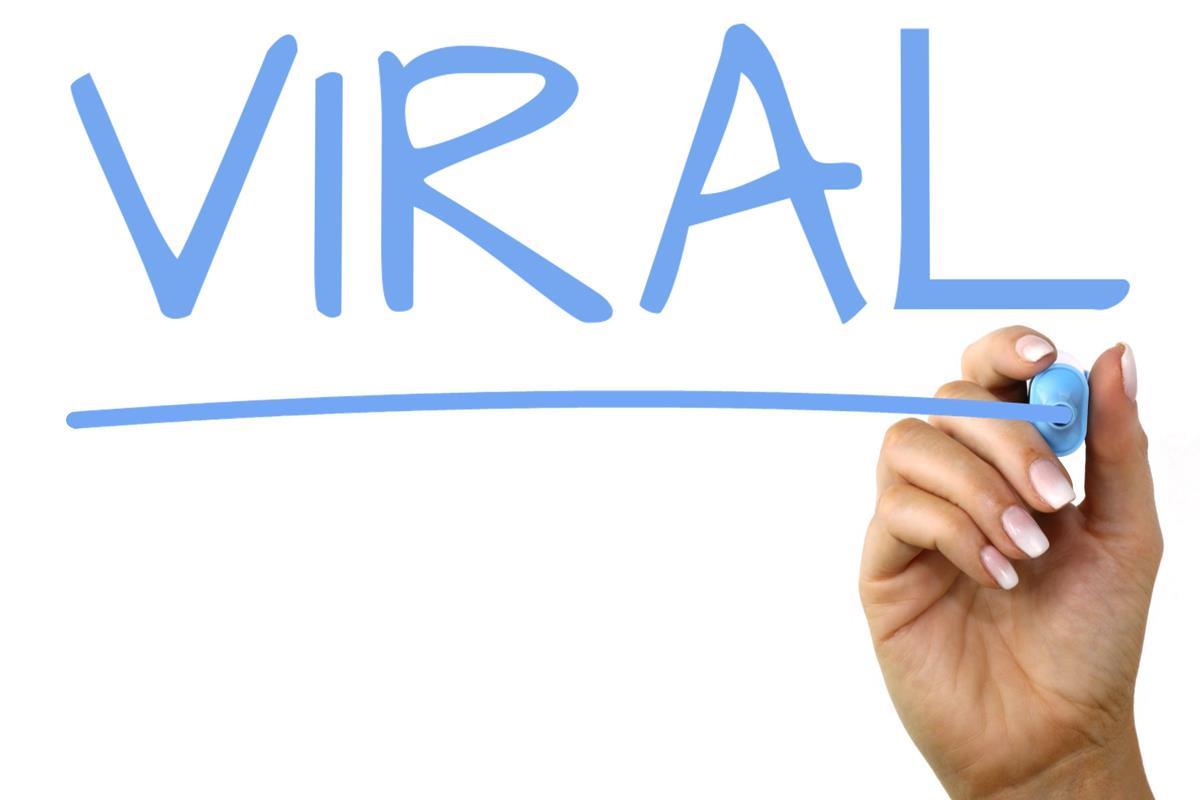In a world driven by fleeting moments and ever-changing trends, it seems that popular culture can transform with just the click of a button. From bizarre dance crazes to daring feats of courage, viral challenges have the power to captivate and compel individuals across the globe. But what exactly drives these viral sensations? How do they effortlessly influence popular culture, and in turn, breathe life into new trends? Join us on a captivating journey as we explore the mysterious forces behind viral challenges and trends, uncovering the mesmerizing symbiosis between the digital era and the pulse of popular culture. Brace yourselves, for we are about to dive headfirst into a vibrant world of viral phenomena.
Influence of Viral Challenges and Trends: Unveiling the Power of Social Media
One cannot overlook the profound impact that viral challenges and trends hold in shaping popular culture. In this digital age, social media has become an indisputable force that fuels the growth and spread of these phenomena, ultimately influencing the behavior and interests of individuals worldwide.
One of the undeniable powers of viral challenges is their ability to bring people together and create a sense of unity. Whether it’s the Ice Bucket Challenge, the Mannequin Challenge, or the currently popular TikTok dance challenges, these trends have successfully connected individuals from diverse backgrounds and geographical locations, fostering a sense of community. Social media platforms serve as a medium for people to share their participation in these challenges, instantly reaching a broad audience and inspiring others to take part.
- Table 1: The Most Influential Viral Challenges
| Challenge | Platform | Number of Participants |
|---|---|---|
| The Ice Bucket Challenge | 17 million | |
| The Mannequin Challenge | 25 million | |
| TikTok Dance Challenges | TikTok | 500 million |
Moreover, viral challenges and trends often serve as a platform for social activism. Through the power of social media, individuals and communities can raise awareness and funds for important causes. Examples like the ALS Association benefiting from the Ice Bucket Challenge’s immense success further highlight the potential influence of such trends on social issues.
It is evident that viral challenges and trends possess an extraordinary capacity to shape and transform popular culture. They not only bridge gaps between people but also provide avenues for individuals to express their creativity, support causes, and leave lasting impacts. As social media continues to evolve, we can anticipate even more thrilling challenges and trends that will define the future of popular culture.

The Impact on Popular Culture: From Fads to Lasting Societal Shifts
One of the most fascinating aspects of popular culture is how it is constantly evolving and being influenced by viral challenges and trends. These online phenomena have become a driving force in shaping our collective consciousness and have the power to create lasting societal shifts. From fads that come and go in a matter of weeks to trends that reshape the way we live, viral challenges have a profound impact on popular culture.
Viral challenges and trends have the ability to capture our attention, ignite conversations, and even transform social norms. Just think about the Ice Bucket Challenge that took social media by storm in 2014. This viral trend not only raised awareness and funds for ALS research but also brought together people from all walks of life to participate and share their experiences. The Ice Bucket Challenge highlighted the potential of viral challenges to bring about positive change and sparked a wave of subsequent charitable challenges, demonstrating the power of these trends beyond mere entertainment.
Beyond charitable causes, there are numerous examples of viral challenges and trends that have left a lasting impact on popular culture. The Kylie Jenner Lip Challenge, for instance, influenced the beauty industry by popularizing the desire for fuller lips and indirectly inspired the creation of new beauty products and procedures. Similarly, the Harlem Shake viral dance trend not only became a global phenomenon but also influenced the music industry, with artists integrating the dance’s catchy beat into their songs.

Analyzing the Pros and Cons: Navigating the Fine Line of Virality
When it comes to the ever-evolving landscape of popular culture, viral challenges and trends have become the driving force behind shaping our online experience. From the ALS Ice Bucket Challenge to the Mannequin Challenge, these viral phenomena captivate our attention and have the power to influence millions of people across the globe. However, as we navigate the fine line of virality, it is important to analyze the pros and cons that come with these trends.
The Pros:
- Global Awareness: One of the biggest advantages of viral challenges and trends is their ability to generate widespread awareness for a specific cause or issue. Whether it’s promoting a charitable organization or spreading important messages, these challenges have the potential to reach a massive audience, mobilizing people to take action and make a positive impact.
- Community Building: Viral challenges and trends create a sense of community and unity among participants. People from different backgrounds come together to join in the fun, fostering a sense of belonging and togetherness. This social cohesion allows individuals to connect with each other on a deeper level, forming relationships that extend beyond the virtual realm.
The Cons:
- Short-Lived Attention: While viral challenges and trends can rise to fame quickly, they often fade away just as fast. The transient nature of these phenomena means that their impact may be short-lived, with people moving on to the next big thing. This lack of sustained attention can make it challenging for important issues or messages to have a lasting impact.
- Potential for Harmful Behavior: As viral challenges and trends gain popularity, there is always a risk of individuals engaging in risky or dangerous behavior to participate. Whether it’s attempting dangerous stunts or imitating harmful actions, viral trends can sometimes encourage reckless behavior that puts participants’ safety at risk.

Harnessing Viral Challenges Responsibly: Mindful Engagement for Positive Change
As the digital landscape continues to evolve, viral challenges and trends have become an integral part of popular culture. From the Ice Bucket Challenge to the Mannequin Challenge, these phenomena have swept the internet, captivating the attention of millions and shaping societal norms. However, it is crucial to consider how we can harness these viral challenges responsibly and mindfully engage with them to create positive change.
One way to approach viral challenges and trends responsibly is by promoting awareness and education. Many challenges are born from noble causes, raising funds and awareness for important issues. By participating in these challenges, individuals can help amplify the message and contribute to meaningful change.
Another aspect of mindful engagement involves considering the potential consequences and impact of viral challenges. While some challenges are harmless fun, others can have negative effects on individuals’ physical and mental well-being. It is important to evaluate the risks and make informed choices before participating in any challenge. By promoting safety and well-being, we can ensure that viral challenges continue to be a force for positive transformation in popular culture.
As we bid adieu to the world of viral challenges and trends, one thing becomes indisputably clear: they have become the lifeblood of popular culture. These whimsical, often absurd phenomena have captivated the masses in a way that conventional forms of entertainment simply cannot. From the ice bucket challenge that soaked the world in a united wave of altruism, to the Harlem Shake that transformed the humble shuffle into a global dance phenomenon, viral challenges have left an indelible mark on our cultural landscape.
But what exactly is it about these challenges that has the power to mesmerize and unite us? Perhaps it’s the innate human desire for connection, amplified by the unrivaled reach of the internet. As we watch ordinary individuals from all walks of life engaging in extraordinary acts, we are reminded that amid our diversity, we possess a shared capacity for adventure, empathy, and sheer silliness.
Viral challenges and trends also serve as a reflection of our ever-evolving societal norms and values. They mirror the pulse of our collective consciousness, from raising awareness about important social issues to celebrating the idiosyncrasies that make us unique. They challenge traditional media channels, giving a platform to countless underrepresented voices and shining a light on topics that once languished in the shadows of obscurity.
However, as we navigate this viral playground, it is vital to exercise caution and discernment. With the flick of a finger, we have the ability to amplify messages, whether they’re empowering or damaging. In our quest for viral fame, we must never forget the potential consequences our actions may have on ourselves and others. Let us remain mindful of the line between harmless fun and reckless abandon.
So, as we bid farewell to the viral challenges of today, we eagerly await the birth of those yet to come. Unpredictable, exhilarating, and often puzzling, these trends have the remarkable ability to shape our contemporary culture. From setting dance floors ablaze to raising societal consciousness, viral challenges command our attention, urging us to explore the extraordinary within the ordinary.
Let us embrace the sheer joy and connectivity these trends generate while still standing steadfast in our responsibility as participants and voyeurs. For it is through this careful balance that we can elevate, imparting upon these viral sensations lasting impact and meaning that transcends the fleeting nature of internet fame. Now, as we take these reflections and move forward, remember, the power to determine what trends and challenges lie ahead rests firmly in our own hands. The question is: what will we choose?




